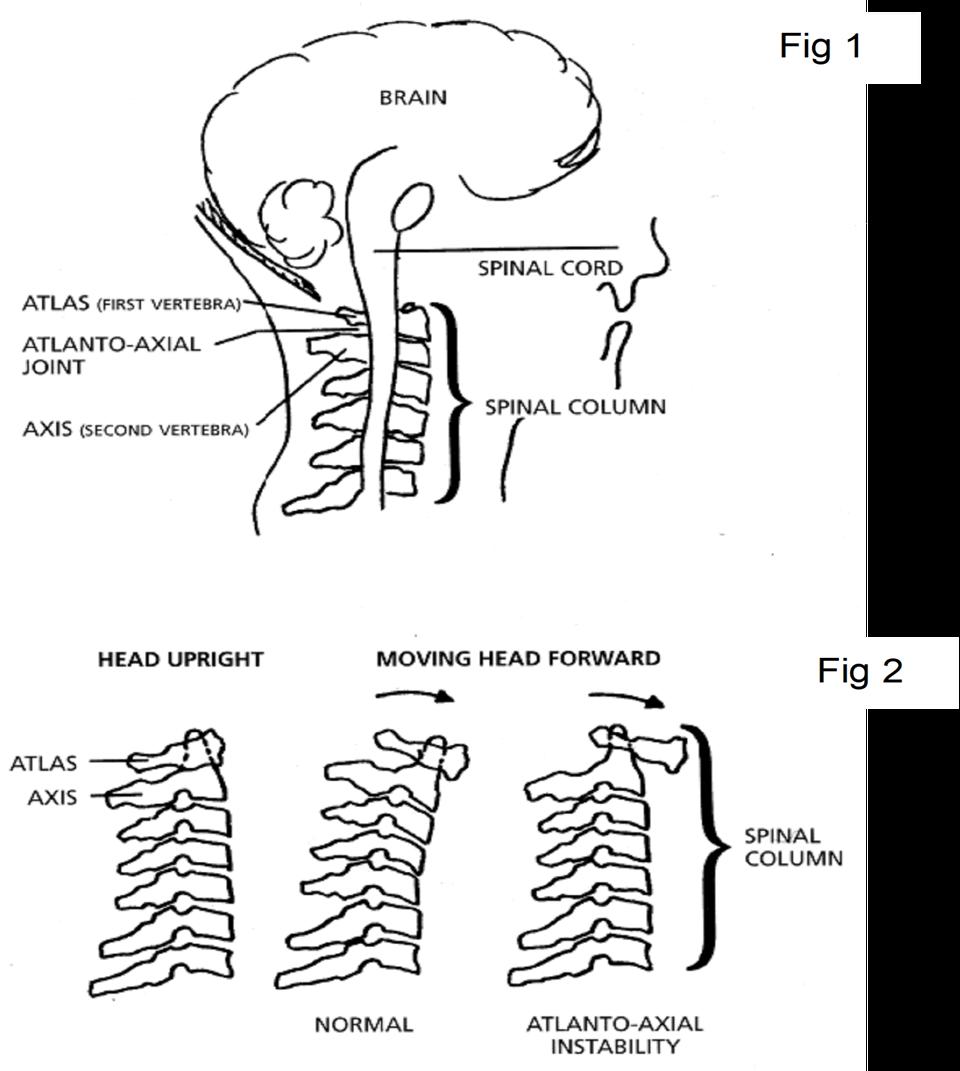Individuals with Down Syndrome may be at increased risk of cervical spine (neck) disorders. In a small number of cases, excessive movement (instability) of the bones of the cervical spine can cause pressure on the spinal cord.
What causes cervical instability?
The area between the skull and the top of the cervical spine (craniovertebral junction) is made up of small joints, muscles and ligaments.
Low muscle tone and ligament laxity in people with Down Syndrome may cause excessive movement at the top of the cervical spine as the head is moved, causing pressure on the spinal cord.

Does my child need a cervical x-ray?
The incidence of cervical instability in childhood is very low. Routine x-rays are not recommended. Some competitive sports organisations, such as gymnastics, may require a cervical x-ray as policy.
An x-ray or MRI may be required if there are any signs of cervical instability.
What are the warning signs of cervical instability?
- Pain at a spot near the hard bump behind your child’s ear
- A stiff neck which doesn’t get better quickly
- Unusual head posture
- A change in the way your child walks so they may appear unsteady.
- Changes in your child’s ability to manipulate things with his/her hands.
- Incontinence developing when your child has previously had no problems.
If you are concerned that your child may have signs of cervical instability, contact your family doctor or hospital consultant.
https://www.downs-syndrome.org.uk/
Accessible formats
If you require this information in a community language or alternative format such as Braille, audio, large print, BSL, or Easy Read, please contact the Equality and Human Rights Team at: email: fife.EqualityandHumanRights@nhs.scot or phone 01592 729130. For people with a hearing or verbal impairment you can also contact the team through the NHS Fife SMS text service number on 07805800005.





